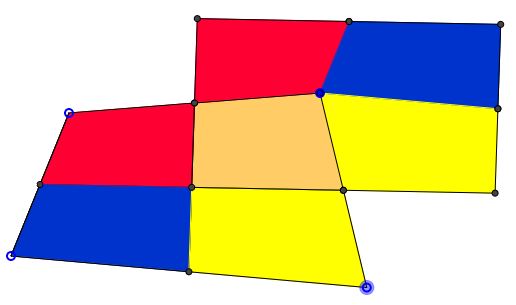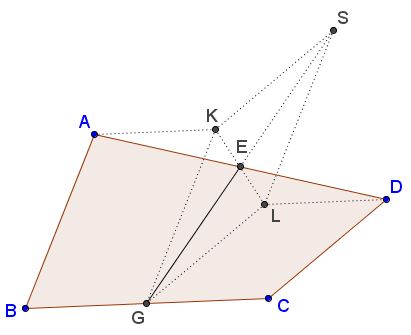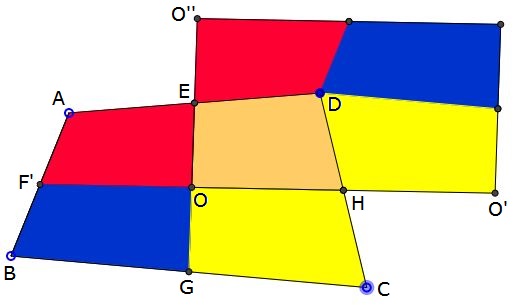Parallelograms among Quadrilaterals
What Might This Be About?
Problem
For every (convex, and, if so, for non-convex) quadrilateral ($ABCD$ below) there is a parallelogram ($OO'B'O''$) below of the same area but smaller perimeter.

Solution
The proof depends on the following property of bimedians - the lines joining the midpoints of the opposite sides of a quadrilateral.
In a quadrilateral $ABCD,$ $E$ is the midpoint of $AD,$ $G$ the midpoint of $BC.$

Then $2EG\le GK+KS=GK+GL= AB+CD.$
Apply that to the diagram below:

$2OO'=2F'H\le AD+BC.$
And, similarly,
$2OO''=2EG\le AB+CD.$
Note that, by the construction, $OO'B'O''$ is a parallelogram with perimeter
$2(OO'+OO'')\le AD+BC+AB+CD,$
the perimeter of $ABCD.$ The construction (by dissection and rearrangement) makes it obvious that the two quadrilaterals have the same area.
|Contact| |Front page| |Contents| |Geometry|
Copyright © 1996-2018 Alexander Bogomolny73558436
